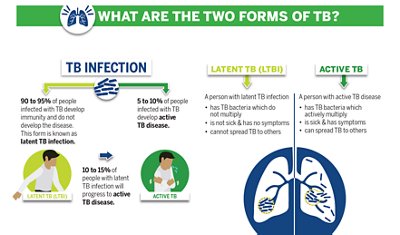The Severe Impact of COVID-19 on TB Management
By the bioMérieux Editors | Reading time: 2 min
PUBLICATION DATE: APRIL 19, 2022
“The Covid-19 pandemic has had devastating effects on every aspect of global health, but tuberculosis services have been disproportionately affected,” says WHO Chief Scientist, Dr. Soumya Swaminathan in a recent New England Journal of Medicine article.
In 2020, 10 million people developped Tuberculosis (TB), and the infectious disease killed 1.4 million people worldwide. While this number represents a 9% decrease in cases and a 14% decrease in the total number of deaths since 2015, TB is the second leading infectious killer after COVID-19 (above HIV/AIDS). The progress that has been made over the last several years is being reversed by the COVID-19 pandemic. The most obvious impact is a large global drop in the number of people newly diagnosed with TB and reported.

Human, financial, and other resources have been and continue to be reallocated from TB treatment and prevention to the COVID-19 response. Staff from national TB programs have been reassigned to COVID-19 related duties, and funding for TB prevention, diagnosis and treatments continues to be a challenge. Additionally, fear of the coronavirus, lockdowns, and clinic closures have been barriers to patients who may be struggling with TB or undiagnosed.
The World Health Organization (WHO) has stated that health disruptions caused by COVID-19 resulted in far fewer cases of TB reported within the national surveillance system in 2020 compared to 2019. TB notifications in three of the highest-burden countries—India, Indonesia, and the Philippines—fell 25-30% from January to June 2020 compared with the same period in 2019.
This significant drop in case notifications has negative implications for public health. WHO modelling estimates that if the number of TB notifications globally falls 25-50% over a 3-month period, deaths from the disease could rise by as much as 400,000. Like the novel coronavirus, TB bacteria spreads most efficiently indoors and among people in close contact. Each person with TB can spread the disease which raises the concern of people infected while indoors spreading it as lockdowns come to an end.
“The more you leave undiagnosed and untreated, the more you will have next year and the year after,” said Dr. Lucica Ditiu in an August 2020 New York Times article. Dr. Ditiu is the Executive Director the Stop TB Partnership, an international consortium of 1,700 groups fighting the disease.

The WHO released a note in May of 2020 that urged national TB programs to continue to maintain essential services for those impacted by TB during the COVID-19 pandemic. They have also stressed that it is important to work to prevent a reversal of the progress made in TB prevention and care due to the onset of COVID-19.
While COVID-19 has had a direct impact on the management of TB, hope remains. 108 countries have expanded their use of digital technologies and are encouraging home-based treatment. There have also been strides in guaranteeing supplies of drugs and diagnostic tests. Additionally, some measures for COVID-19 management can be beneficial for managing tuberculosis as well, such as basic infection control practices and patient triage.
On World TB Day, let us remember that there are many infectious diseases that take an enormous toll on global health every year. It is crucial that we maintain resource allocation for the prevention and treatment of these diseases, including Tuberculosis, and continue to promote awareness of this deadly disease.
1. Global economic impact of tuberculosis: a report for the Global TB Caucus. Zurich: KPMG; 2017.
Opinions expressed in this article are not necessarily those of bioMérieux.
SHARE THIS:
- Infectious Diseases